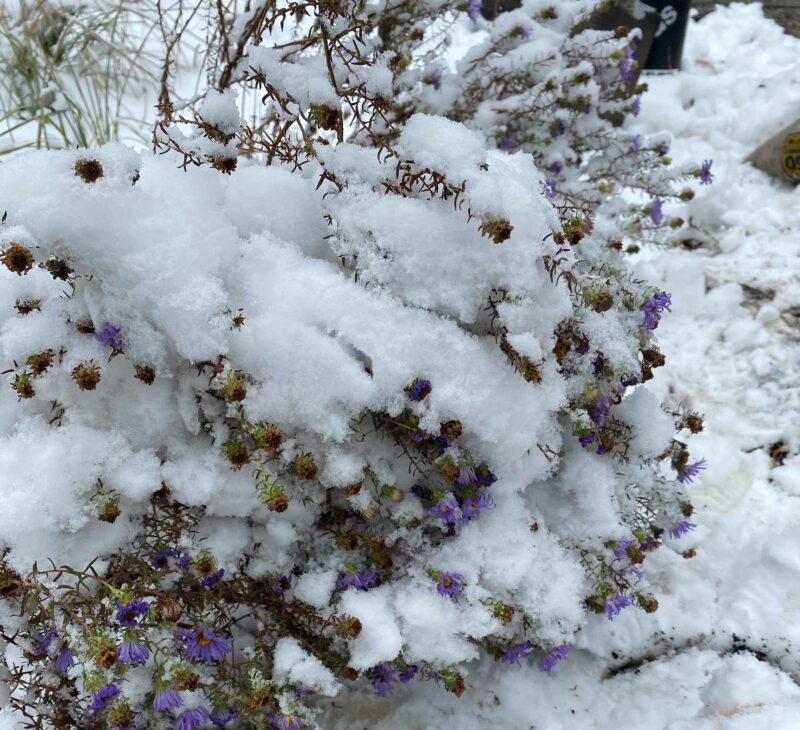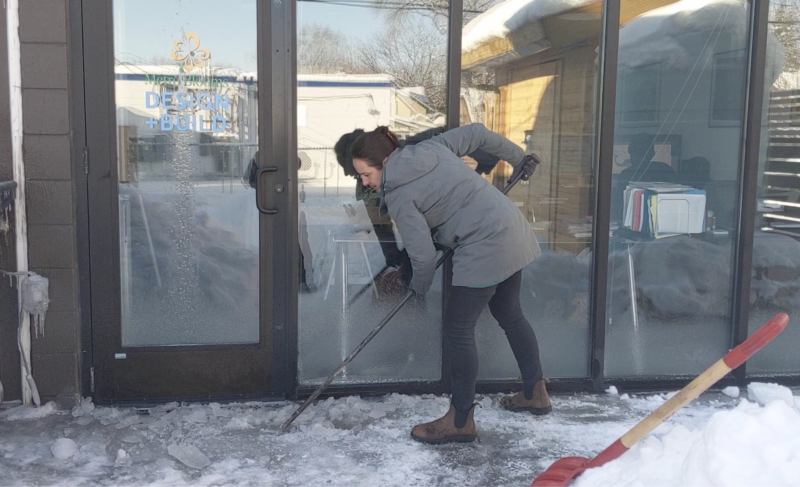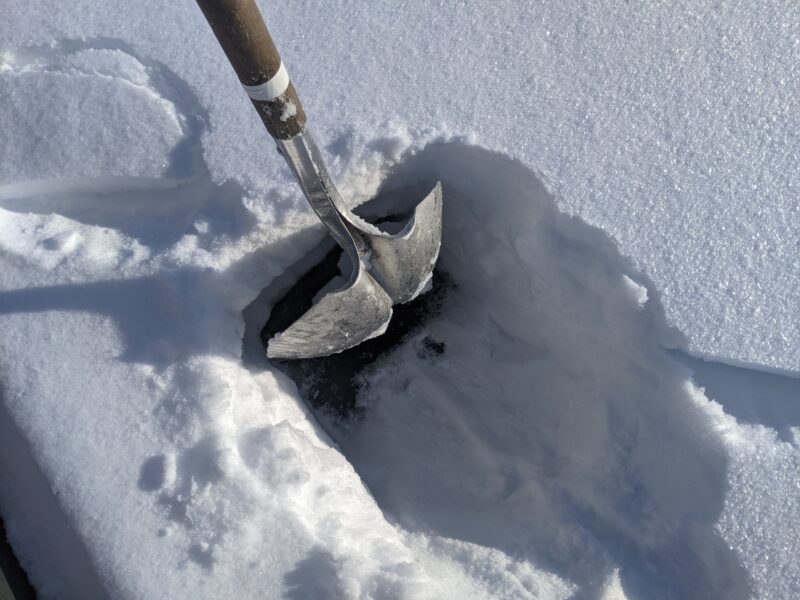
In the thick of Minnesota midwinter, dealing with snow is a way of life. Clearing snow and ice from roads and sidewalks helps us get around safely. Many of us rely on road salts and deicers to make the job easier, but these chloride-based products have harmful impacts on the environment, including the native plantings and raingardens in our own yards.
De-icing salts work by reducing the melting point of water, which prevents ice from forming. In the Twin Cities metro area alone, the Minnesota Pollution Control Agency (MPCA) estimates that we apply an estimated 365,000 tons of deicing salt on pavement and asphalt each year.
When winter ends and snow and ice melts, all that salt we spread flows with meltwater into the nearest storm drain, where it eventually ends up as a pollutant in our groundwater and waterways.
“Just one teaspoon of salt permanently pollutes five gallons of water,” says Rich Harrison, Co-Director of Design at Metro Blooms. Once chloride enters a waterbody, it is virtually impossible to remove it. And chloride levels in our lakes and rivers are rising. The MPCA has documented fifty lakes and streams as having chloride levels above the standard designed to protect aquatic life.
“If we continue to use salt at the rate we are currently, then some of our urban lakes will not be able to support aquatic life in another 15 to 20 years,” Harrison says, referencing Freshwater Society’s article “A Salted Lake: Lake Johanna,” about the problem.
Cities have an incentive to reduce their salt usage, not only to protect our freshwater ecosystems, but also to reduce repair costs for infrastructure easily corroded by chloride. The MPCA’s Smart Salting program has been training public works agencies and property managers to use techniques that strike a balance of safety and minimizing environmental impact.
Keeping Salt Out of the Garden
Your native garden might be in closer contact with salt than you think. “There are two main ways plants can be impacted by salt—exposure from salt spray, and runoff,” Harrison explains. Plants along roadways can get salt sprayed on by passing vehicles. For raingardens or pollinator gardens that receive runoff from a parking lot, driveway, or other surface where salt is commonly applied, chloride can absorb into soil and plant roots when snow melts in the spring.
Some plants are more tolerant of salt than others. Too much salt can prevent a plant from being able to absorb water and nutrients, and even interfere with photosynthesis, the process by which plants convert sunlight into energy. Salt spray injures plant tissue and blunts growth of branches and leaves. These symptoms can build up over time and eventually lead to plant death. Luckily, there are a few simple tips we can all follow to avoid deicing damage in our garden while keeping nearby our walkways and driveways ice-free.
Shovel, Chop, Shovel
When it’s crunch time and a snowstorm is coming, “don’t just go the easy way out and throw on salt,” Harrison says. By getting out early and frequently, the snow has less chance of thawing and then freezing to ice. If you do have ice buildup, you can use a tool like an ice scraper to chop it off. Harrison notes that when shoveling, it’s also important to know your limits. Don’t be afraid to ask for help from neighbors.

Use Grit and Sand for Traction
“Typical salt is not effective when it’s below 15 degrees Fahrenheit,” Harrison says. In very cold weather, it’s more effective to apply some sand, or chicken grit to create traction. A little goes a long way. Sand or grit is also easy to sweep up in the spring for reuse next winter.
Use salt only on problem areas and as a last resort. Understanding where runoff comes from and where it drains into your yard, Harrison explains, can help illuminate where you need to be extra careful about your salting practice. If runoff is entering your garden from just your roof or lawn, salt is not likely getting to your plants. But if you have a driveway with a channel drain, or pavement that leads downhill to your garden, you’ll want to limit salt application in those areas.
Choose Salt-Tolerant Plants
There are some areas where you simply can’t control the amount of salt that a garden receives. When designing a garden along a busy road, for example, select plants along the edges that are known to have a higher tolerance to salt. That way your raingarden or pollinator garden can thrive and continue to do its job of protecting clean water and providing valuable habitat. Start with the MPCA’s Minnesota Stormwater Manual or the Minnesota Department of Transportation’s Plant Selector Tool, which contain lists of native salt-tolerant plants for different project needs.
Locate Your Snow Pile Wisely
Where you put your snow matters. If you can, create snow piles downhill from your driveway or sidewalk. Snow piled uphill from a walking surface will move downhill and onto the surface as it melts, creating icy spots and slipping hazards. If any salt was applied to that surface, the snowmelt will pick it up. (Ideally, any applied salt remaining after the ice is gone should be swept and removed after use!)

Become a Smart Salting Advocate
Snowy and icy winters are not going away anytime soon. As the climate changes and freeze-thaw cycles become more frequent, practicing smart salting practices in our neighborhoods and cities will become increasingly more important. Step up as an advocate for smarter salting with following actions and resources:
- Take the City of Minneapolis’s Salt Mini-Course and complete their Salt Stewardship Pledge.
- Track salt pollution in your area by joining the Izaak Walton League of America’s Winter Salt Watch Program.
- Start or support a campaign in your area, such as Stop Over Salting.
- If you hire snow removal services for your business or property, choose a contractor certified by the MPCA’s Smart Salting program.
- Connect with your local watershed district. Many offer free resources for practicing or spreading the word about smarter salting.
- Don’t lose spirit! Remember that your actions make a difference.
– Megan Reich, Metro Blooms Marketing and Communications Specialist
